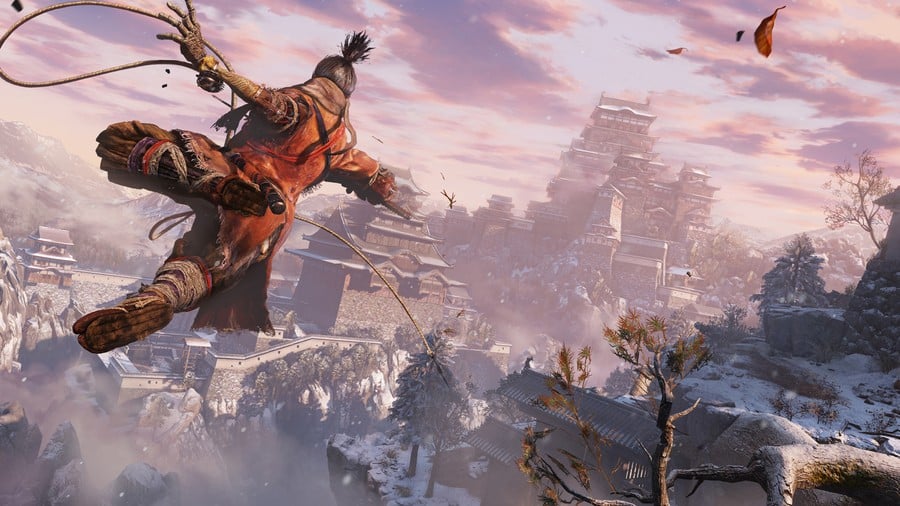
Sekiro: Shadows Die Twice is the next project by the excellent FromSoftware, a studio you'll know quite intimately from your time spent dying repeatedly in Dark Souls or Bloodborne. You might have noticed we said 'project' rather than 'action RPG' – that was on purpose, because Sekiro isn't exactly an action RPG.
While it might share some of the DNA of the Dark Souls series, this new title changes some fundamental things, making it very much its own thing. In this guide, we're going to detail exactly what Sekiro is, and how it differs from FromSoftware's fan favourite franchise -- as well as how it's similar.
For more general questions about the game, check out our FAQ.
Sekiro: Shadows Die Twice - What It Is
Sekiro: Shadows Die Twice is an action adventure game from the developer of Dark Souls and Bloodborne. Set in the fierce Sengoku period of Japan's history, you play as Sekiro (nicknamed The Wolf), a shinobi charged with protecting a young lord. Of course, things go awry when a samurai lops off his arm and kidnaps the child, sending you on a blood-stained journey to set things right. Like From's other games, Sekiro will centre around tough combat against a variety of enemies and bosses, but how it all plays out will be quite different.
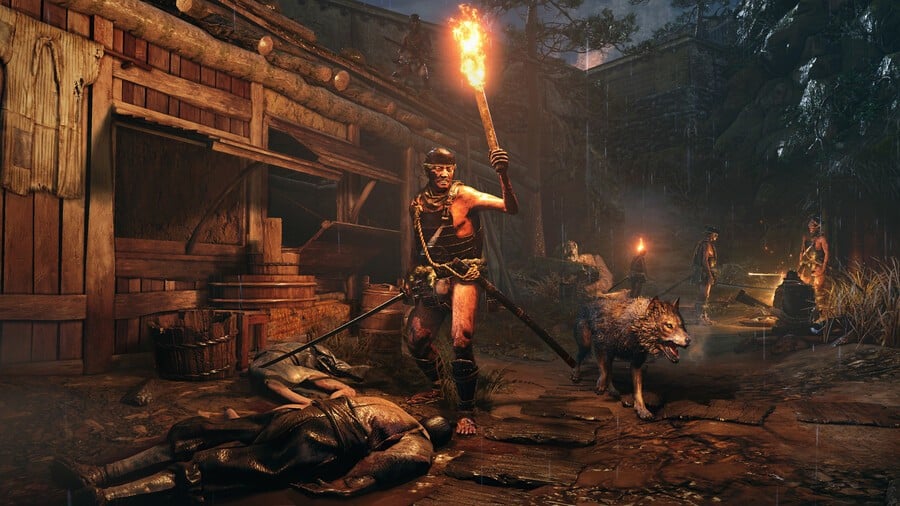
Sekiro: Shadows Die Twice - How It's Similar to Dark Souls
The similarities between Sekiro and Dark Souls are definitely outweighed by the differences, but it's worth noting them nonetheless. Both games feature:
- Challenging melee combat against a wide variety of enemies
- Lots of bosses, some optional, to tackle
- An interconnected world with plenty of secrets
- Respawn points dotted across the map
As you can see, the games share some top-level design choices, but Sekiro is largely a very different experience.
Sekiro: Shadows Die Twice - How It Differs from Dark Souls
Below, we'll be going through the main ways in which Sekiro differentiates itself from Dark Souls and Bloodborne.
Combat
Dark Souls is a heavily defensive game. Nine times out of 10, the best approach is to raise your shield, wait for an enemy's attack to finish, and then deliver a few blows yourself before getting back out of harm's way. Bloodborne played a little more aggressively, giving you a gun instead of a shield and encouraging you to keep up the offensive.
In Sekiro, your health bar is less important, and much like Bloodborne, you'll create an opening to attack yourself, rather than wait for the enemy to trip themselves up. While regular attacks will chip away at an enemy's health as you're used to, you're also carving open an opportunity to deliver a fatal blow – much like how sword fights work in real life.
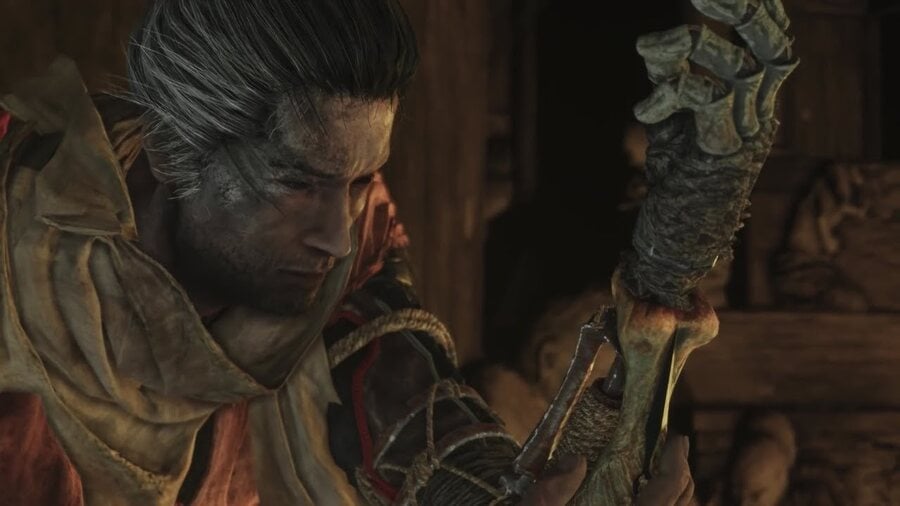
You achieve this by attacking their 'posture', which is lowered each time they have to block one of your attacks or you perform a particularly sneaky move. Once it's lowered enough, you can pull off a fatal blow. Posture is shown by a meter that fills from the middle outwards. This system works both ways, though. Each time you block an attack, your posture will also be weakened – unless you pull off a parry, or 'Perfect Block'. Achieve this, and it's their posture that will be lowered instead. Parrying will be an important facet of Sekiro's combat, because simply blocking will protect your health, but if you don't watch your posture, you'll become vulnerable very quickly.
Another element of combat that's different from Dark Souls is the Kanji sense. Symbols will appear above your head during combat and will signify various things. How many of these are in the game remains to be seen, but one example is a red Kanji symbol indicating an incoming heavy attack, allowing you to dodge or try to counter it. You can't just tap a button to block it though. You'll still have to read the enemy's movements to avoid the incoming attack – much like in Dark Souls. Also, there's more to getting out of the way than just rolling. This time you may have to jump over attacks, for example.
Stealth
You could sort of sneak up on baddies in Dark Souls et al, but in Sekiro: Shadows Die Twice, stealth is built into the gameplay. Tall grass will hide you from patrolling enemies, and there are bound to be other ways to hide from foes. If you're able to get close enough to an enemy, you'll be able to pull off a one hit stealth kill, which will certainly help to even the odds against a larger group.
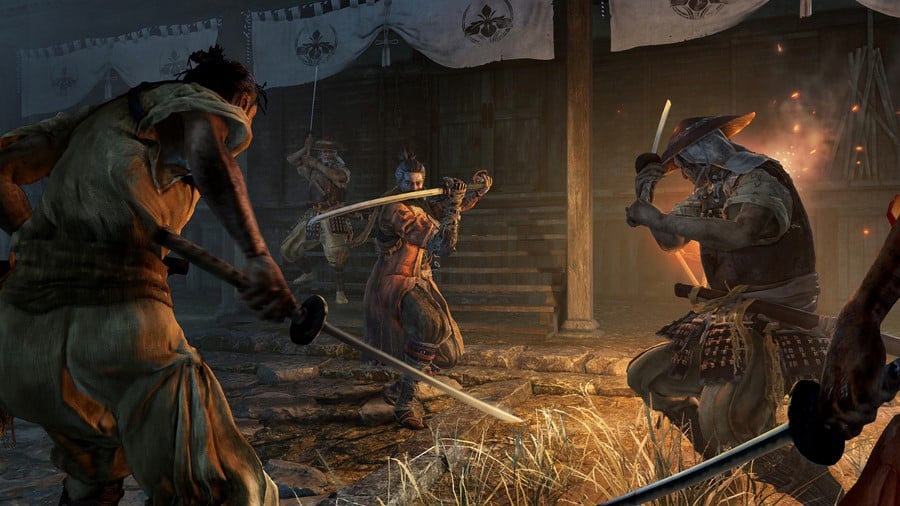
Movement
Sekiro seems like a much faster moving game from top to bottom, but a few new tricks will make getting about in this title feel vastly different from the Soulsborne games. The Wolf has a dedicated jump button, for instance, which will immediately enable a nimbler style of play. This, along with a grappling hook ability, makes the game much more vertical. You'll be able to leap about locations either to get a better view or to avoid incoming attacks.
Equipment
Equipment won't work exactly as it does in Dark Souls, with less room for customisation. You'll always have your katana equipped in your right hand, for example, but you can equip whatever in your left. These are referred to as attachments for your Shinobi Prosthetic, and examples we've seen so far include an axe that you can use to destroy shields, a shield itself, and a torch that can set enemies on fire.
These combinations of weapons have a variety of different effects, ranging from the obvious (shields block attacks) to the less obvious (the torch can set your katana on fire). Creating combos with these different weapon types should help keep combat fresh.
You won't be collecting souls in Sekiro, but you will earn XP and a form of currency when you take down enemies. Experience points are put towards new skills in various skill trees, while the currency is simply that: a means of purchasing new items and consumables.
Your grappling hook is also a permanent addition, and is used across both combat and environmental traversal. You can use it to reach rooftops and cliffs, or to pull enemies close to you and leap over them.
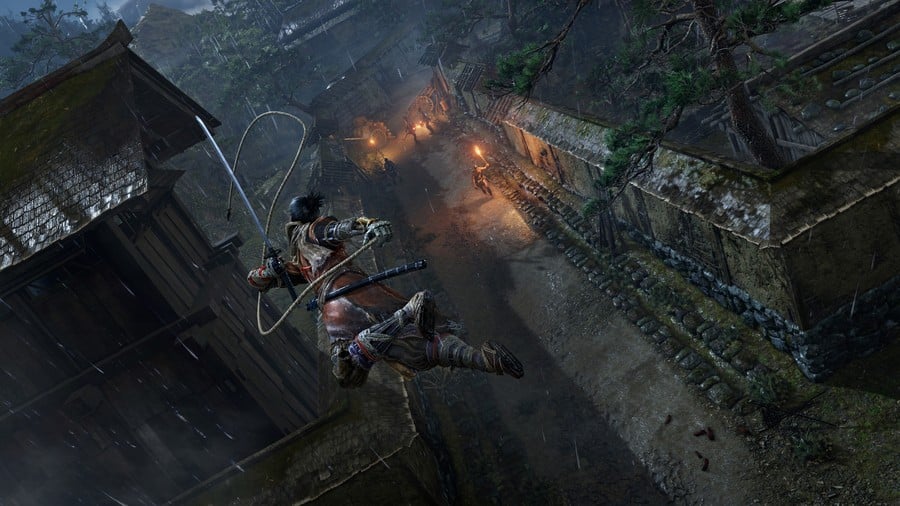
Leveling Up and Character Customisation
To be frank, you don't level up in Sekiro: Shadows Die Twice. There are no stats to worry about, either. The RPG elements have effectively been ripped out in this game. Still, that's not to say you won't be able to tinker with your version of Sekiro.
All players will use the same character, but through XP earned in battle, you're able to customise how he plays to a degree. Experience isn't used to level up, but rather to unlock new skills across three skill trees, each focusing on different aspects of the character. For instance, if you like to play sneaky, there will be ways to capitalise on that side of things. We don't know too much about what skills will be available, but just know that they'll be your way of becoming more powerful instead of incrementally adding to your stats.
Death
The clue's in the name -- Sekiro: Shadows Die Twice has a slightly more flexible take on death than From's other games. When you lose all your health in this game, you'll die, but you'll be given a choice. You can either resurrect yourself on the spot, or pass on properly. The former will allow you to get immediately back into the action, and even potentially get the jump on baddies that thought you were thwarted. The latter option will respawn you at the last Sculptor's Idol you activated (think bonfires). However, there's a limit to how often you'll be able to resurrect within a certain timeframe; you can't play recklessly and infinitely come back to life.
Furthermore, it's worth noting that when you do die (rather than resurrect), you'll permanently lose half of your money and half of your XP towards the next skill point. There's no getting it back, either -- unless you get Unseen Aid, which prevents this from happening at all.
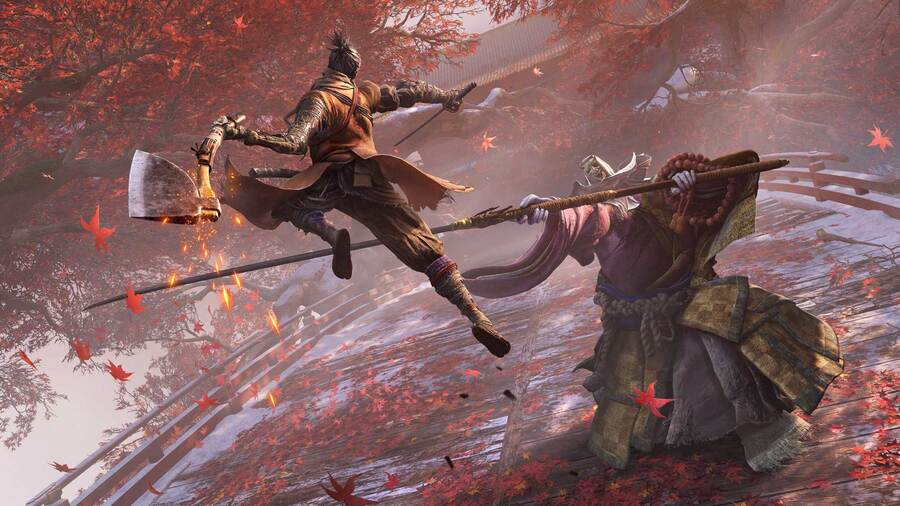
World
The world design is an area in which Sekiro does resemble Dark Souls – FromSoftware is going back to its roots. The world of Sekiro will be interconnected in parts, but will feature some more open areas as well as more linear locations. Apparently you can explore it at will too – there's no need to find keys or any of that faff.
The environment itself is set in a fantastical version of feudal Japan, so expect to see plenty of temples, villages, cherry blossoms, and all the typical sights. Of course, this is a FromSoftware game, so expect to see a dark interpretation of the setting, as well as the enemies that inhabit it.
Enemies
Sekiro's roster of enemies will likely prioritise humanoid bad guys, because the focus of combat this time around is sword fighting. However, that's not to say there won't be some more monstrous foes to face; who knows what some of the bosses will look like, and we've already seen a giant and an enormous snake. From's typically great enemy design looks to be intact here -- even if a lot of the regular enemies will simply run at you with a katana.
Multiplayer
A big part of From's previous action titles is their online components, allowing players to leave messages for each other, invade each other's worlds, or cooperate in order to take down tough enemies. Sekiro: Shadows Die Twice won't have any of that. It does mean that, mercifully, you'll be able to pause the game this time.
These are the main ways in which Sekiro: Shadows Die Twice will differ from Dark Souls. As you can tell, it's shaping up to be quite the departure. Are you looking forward to playing FromSoftware's latest? Grapple hook down to the comments below.





Comments 16
Some of the ideas presented here sound extremely interesting – like the blocking/opening system and the surprise respawn. The grappling hook also looks very dynamic. Looking forward to it!
That second last image - both this and Tsushima's have the same grass field.
2019 is the year of the Ninja!
Doesn't seem as good as dark souls but still looks like it's worth a go
All of a sudden there's loads of Samurai games.
This is good.
I’m looking forward to this game.
Action + skill tree = action rpg. The concept is not much different from Nioh, Horizon Zero Dawn, Bloodborne, Yakuza, ... which PushSquare all listed as RPGs. I mean, if Bloodborne is an RPG or action RPG, Sekiro should qualify as well in the same category.
@Bonbonetti Depends if Sekiro has things like stats, dialogue, dialogue options, and all that kind of stuff. Almost every action game employs some sort of skill system these days. By that logic something like Devil May Cry could be an action RPG, but that just ain't right.
I'm still so ambivalent about it. I'm going to buy it, and play it, and I'll probably like it well enough, but it just sounds so similar to every other action game. More generic. I like those games, but there are plenty of them. Something about DS/BB has been lost in this one, and to me that's a shame.
Everything here seems promising. I'm very happy traditional levelling has been replaced by acquisition of new abilities. RPG's often get annoying when you're too low level to progress.
can't wait.this and days gone.word up son
I want to get this so badly, but you know, Activision.
So it has better spawn points, not as harsh for when you die and you can pause the game? Loads better than Bloodborne already, sounds interesting now. If they can also add a game difficulty option too, that would be a dead cert for me
@ShogunRok Fifa 19 too has tons of stats, different roles and dialogue options!
@andreoni79 True, but I'd argue FIFA has an RPG 'mode' — the game itself isn't an RPG.
The more I read and see, the more I feel excited about this. I probably won’t buy it day 1 but I really like some of these game features I’m seeing.
Leave A Comment
Hold on there, you need to login to post a comment...